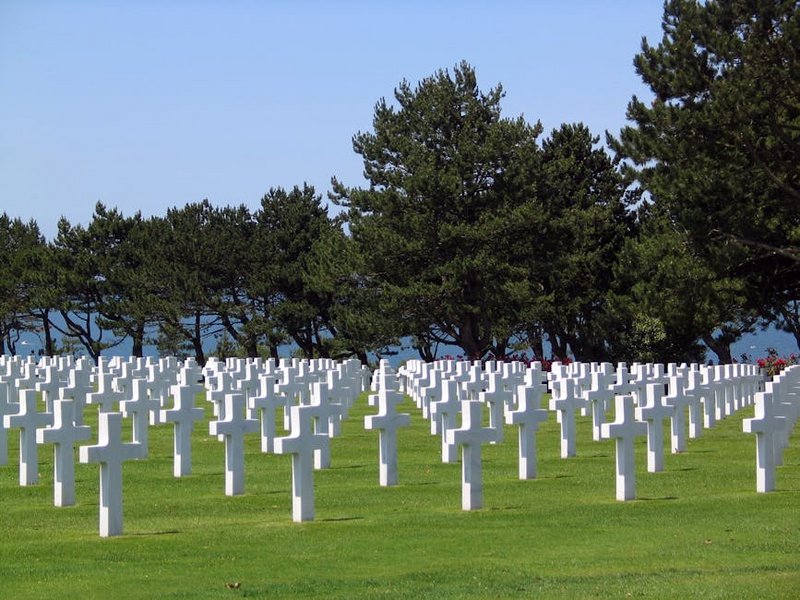Bahrain Dilmun Burial Mounds – Exploring Ancient Mysteries
The Bahrain Dilmun Burial Mounds represent one of the largest prehistoric cemetery complexes globally, with over 170,000 burial mounds dating back to the Dilmun civilization between 2050 and 1750 BCE. These UNESCO World Heritage sites offer unparalleled insights into early trade networks, burial practices, and societal structures across ancient Mesopotamia and the Indus Valley. Your visit uncovers archaeological wonders through guided tours, museum exhibits, and accessible mound fields near modern Manama.
Essential Information About Dilmun Burial Mounds
The Dilmun civilization flourished as a major trading hub from 3000 to 600 BCE, connecting Mesopotamia with the Indus Valley through pearl diving and date cultivation. Archaeological evidence shows sophisticated tomb construction with chambered mounds for elite members, reflecting social stratification and spiritual beliefs about afterlife journeys. These burial sites span approximately 30 square kilometers across northern Bahrain, with the most significant concentrations in A’ali and Hamad Town.
Excavations since the 1950s revealed artifacts like pottery, copper weapons, and stamp seals that demonstrate extensive trade relationships across ancient civilizations. The Royal Mounds in A’ali feature particularly large structures reaching 15 meters high, indicating burial sites for rulers or wealthy merchants during the peak Dilmun period. UNESCO designated the burial mounds as a World Heritage site in 2019, recognizing their outstanding universal value for understanding early human settlements.
Historical Significance and Timeline
Dilmun’s history spans three major periods that shaped the burial traditions visible today.
- Early Dilmun Period (3000-2000 BCE): Initial mound construction began with simple stone-lined pits, evolving into more complex structures as trade wealth increased through copper and pearl exports.
- Middle Dilmun Period (2000-1000 BCE): Peak construction phase produced the largest royal mounds, with elaborate chamber designs and grave goods indicating strong Mesopotamian cultural influences.
- Late Dilmun Period (1000-600 BCE): Burial practices simplified as political power shifted, though mound construction continued until the Persian Empire’s dominance.
- Budget travelers spend $60-80 daily using public buses ($1-2 per ride), hostel accommodations ($25-35 nightly), and self-guided mound visits with free entry to most sites.
- Mid-range visitors allocate $120-180 daily for rental cars ($35-50 daily), hotel stays ($70-100 nightly), and group guided tours ($25-40 per person) covering multiple burial fields.
- Luxury experiences cost $250-400 daily with private drivers ($80-120 daily), five-star hotels ($150-250 nightly), and exclusive archaeology tours ($75-100 per person) with expert guides.
- UNESCO World Heritage Centre – Dilmun Burial Mounds
- Bahrain Authority for Culture and Antiquities
Archaeological Discoveries and Research
Danish archaeologists initiated systematic excavations in the 1950s, uncovering the extent and significance of these ancient cemeteries. Recent excavations by Bahrain Authority for Culture and Antiquities revealed well-preserved skeletal remains, ceramic vessels, and metal artifacts that provide clues about daily life and burial rituals. Ongoing research uses ground-penetrating radar and 3D modeling to map unexcavated mounds while preserving the structural integrity of these fragile sites.
UNESCO World Heritage Status Details
UNESCO’s designation covers 21 archaeological sites with 11 burial mound fields and the fortified settlement of Qal’at al-Bahrain. The World Heritage Committee recognized the mounds as exceptional testimony to the Dilmun civilization’s funerary practices and their role in Bronze Age trade networks. Protection measures include controlled public access, conservation programs, and educational initiatives to balance tourism with preservation needs for future generations.

Alt: “dilmun-burial-mounds-aali-royal-tombs-landscape”
Bahrain Dilmun Burial Mounds – Planning Your Trip
Visiting the Bahrain Dilmun Burial Mounds requires strategic planning to maximize your experience while respecting the archaeological sensitivity of these ancient sites. The burial fields spread across multiple locations, with the most accessible sites located within 30 minutes drive from Manama city center. Your itinerary should combine mound visits with the Bahrain National Museum to contextualize the artifacts and historical significance.
Budget approximately $50-75 per person for guided tours, transportation, and museum entry fees, with higher costs for private archaeology experts. Summer temperatures frequently exceed 104°F (40°C), making November through March the ideal visiting period with comfortable 68-77°F (20-25°C) conditions. Book accommodations in Manama or Muharraq for convenient access to all major burial mound sites and related cultural attractions.
Best Time to Visit Bahrain
Peak season runs from November to March when daytime temperatures range from 65-75°F (18-24°C) with minimal rainfall, perfect for extensive outdoor exploration of the burial fields. Shoulder months of October and April offer slightly warmer conditions around 80-85°F (27-29°C) with fewer tourists and lower accommodation prices. Avoid June through August when extreme heat exceeding 100°F (38°C) limits comfortable outdoor activities to early morning hours only.
Budget Planning and Costs
Your Bahrain archaeology trip costs vary based on accommodation level and tour preferences.
Essential Preparation Checklist
Pack lightweight, breathable clothing with long sleeves and pants for sun protection, plus sturdy walking shoes for uneven terrain around the burial mounds. Bring sunscreen with SPF 50+, a wide-brimmed hat, and reusable water bottles to stay hydrated during extended outdoor exploration. Digital resources should include offline maps of burial field locations and the Bahrain National Museum app for enhanced artifact information.
Required documentation includes a valid passport with six months validity, while US and EU citizens receive visa-free entry for up to 14 days upon arrival. Book guided tours at least two weeks in advance during peak season, and verify your travel insurance covers archaeological site visits. Learn basic Arabic phrases for respectful interactions with local guides and site personnel.
Top Attractions and Activities
The most impressive burial mound concentrations appear in A’ali village, where royal tombs reach impressive heights alongside modern pottery workshops continuing ancient traditions. Qal’at al-Bahrain (Bahrain Fort) complements mound visits with exhibits about the Dilmun capital’s strategic location and archaeological findings from ongoing excavations. Combined tickets for multiple sites cost $10-15, with early morning visits avoiding both crowds and intense midday heat.
Guided archaeology tours typically cover 3-4 mound fields in half-day itineraries, explaining construction techniques, grave goods significance, and conservation challenges. The Bahrain National Museum provides essential context with reconstructed burial chambers, interactive displays, and original artifacts recovered from various excavation campaigns. Allow 2-3 hours for museum exploration before visiting actual mound sites to enhance your understanding and appreciation.
Must-See Burial Mound Sites
A’ali Royal Mounds feature the largest and most visually striking tombs, with some exceeding 12 meters height and containing multiple burial chambers for elite families. The Sar Burial Complex showcases different mound types across various historical periods, with informational signage explaining architectural evolution and archaeological methodologies. Visit these sites between 8-10 AM for optimal photography conditions with soft morning light accentuating the mounds’ distinctive shapes against the desert landscape.
Hamad Town Mound Fields offer extensive walking paths through thousands of smaller mounds, providing insight into common citizen burials versus elite tombs. Entry remains free with minimal infrastructure, making this ideal for independent exploration with downloaded guide materials. The adjacent visitor center opens from 9 AM to 1 PM daily, featuring scale models and excavation photographs that interpret the site’s significance.
Hidden Gems and Local Favorites
Diraz Temple site combines mound visits with a nearby temple complex from the same period, revealing religious connections between burial practices and spiritual beliefs. Local guides know less-crowded mound clusters in rural areas where you can experience the archaeological landscape without tourist groups. Traditional pottery workshops in A’ali demonstrate techniques similar to ancient Dilmun crafts, with artisans creating replicas of burial pottery found in excavations.
The Tree of Life location 30 minutes south provides interesting contrast between natural wonders and human-made burial structures, though it’s not part of the UNESCO designation. Friday mornings typically see fewer visitors at all sites, allowing quieter contemplation of these ancient cemeteries. Local cafes near mound fields serve traditional Bahraini breakfasts, offering cultural immersion alongside archaeological exploration.
Guided Tours and Archaeology Experiences
Specialized archaeology tours run by Bahrain International Guide Association include access to ongoing excavation sites during winter months, with explanations from working archaeologists. Private tours cost $60-100 for half-day experiences, covering transportation from Manama hotels and detailed interpretations of burial practices and artifact significance. Multi-day packages combine mound visits with other UNESCO sites like Qal’at al-Bahrain and pearling pathway locations.
University-affiliated programs occasionally accept tourist participants for excavation experiences during scheduled field schools, requiring advance registration and modest fees. The Bahrain National Museum offers weekly lectures about recent discoveries and conservation techniques, enhancing visitor understanding beyond basic tour information. Verify guide certifications through the Ministry of Tourism for quality assurance and accurate historical information.
Practical Travel Information
Bahrain International Airport (BAH) serves as the main gateway, located 30 minutes from major burial mound sites with convenient taxi and rental car options. Public transportation exists but proves less reliable for reaching scattered archaeological locations, making rental cars or private drivers preferable for comprehensive mound exploration. Accommodation choices range from budget hotels in Manama city center to luxury resorts along the coast, all within reasonable driving distance.
English signage appears at major burial mound sites, though learning basic Arabic phrases enhances interactions with local caretakers and guides. The Bahraini Dinar (BHD) serves as local currency, with 1 BHD approximately equal to $2.65 USD, and credit cards accepted at most hotels and larger establishments. Mobile networks provide excellent coverage across all archaeological sites, enabling real-time map navigation and information access.
| Category | Options/Features | Price Range (USD) |
|---|---|---|
| Accommodation | City hotels with pool, breakfast included; desert camps with cultural experiences | $45-250 nightly |
| Transportation | Rental cars with insurance; taxi services; guided tour transfers | $25-120 daily |
| Food & Dining | Local restaurants with traditional dishes; international cuisine; cafe snacks | $8-35 per meal |
| Activities & Tours | Guided archaeology tours; museum entries; special access permits | $15-100 per person |


